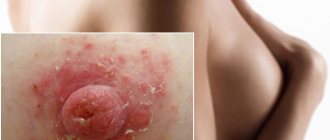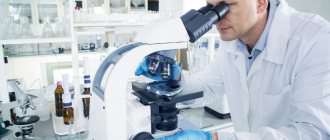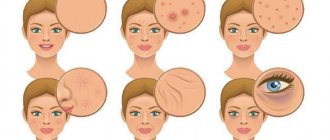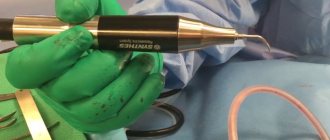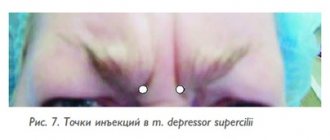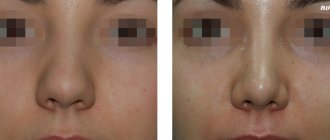Parameters of beautiful nose wings
The wings of the nose are paired, symmetrically arranged cartilages that form the nostrils.
The main parameters of harmoniously formed wings of the nose can be called symmetry and proportionality. When talking about the aesthetics of the olfactory organ, people most often mean a flat back, a neat tip and a moderate projection (length) of the nose. The wings of the nose, due to the fact that they occupy a small area, attract less attention.
The aesthetic configuration of the wings is very important! I can assume that a non-specialist in the field of facial aesthetics is not always able to identify where the “ugliness” of the nose lies. At first glance, everything is not bad, but some element stands out from the well-tailored design. Ugly wings are a touch that can destroy the entire harmony conceived by nature.
They must be symmetrical and proportional to the entire external part of the respiratory organ!
What to do?
If the nostrils are different in the early postoperative period, nothing needs to be done. It is enough to be patient and wait until the restoration of facial tissue is completed. Most likely, no later than in 3-4 weeks the nostrils will become the same. In the future, if swelling occurs, it will only appear sporadically.
If the cause of the difference in nostrils is a poorly performed operation, the only way to solve the problem is revision rhinoplasty. But before you do it, you should ask your friends if they see a difference in the size of the nostrils. It is likely that you are looking at yourself in the mirror too scrupulously. Perhaps the difference is so insignificant that no one but you notices it. In this case, you should leave everything as it is and not expose yourself to unnecessary risks again.
In what cases is surgery necessary?
Correction of the wings of the nose can be either an isolated operation, that is, carried out only on paired cartilages, or part of a complex for the correction of the nose and septum - rhinoseptoplasty.
Let's highlight the 3 most common wing defects that can be corrected surgically:
- Nostrils and wings too wide.
- Asymmetrical wings. We all naturally have asymmetry. This is fine. But in some cases, dissonance cannot be hidden. Therefore, the wings of the nose that are noticeably different in size or location (higher or lower) can be entrusted to a plastic surgeon.
- Fleshy, thick nostrils. The cause may be thickened skin or excess cartilage tissue.
The listed defects in the wings of the nose cannot be corrected with filler injections!
BEFORE AND AFTER PHOTOS
See more before and after photos here
Contraindications
- Age up to 18 years. At a young age, bone and cartilage tissue continues to grow, so the results of the operation may become distorted over time.
- Acute period of chronic disease.
- Infectious, autoimmune, endocrinological diseases.
- Diseases of the blood and cardiovascular system.
- Oncological diseases.
- Epilepsy, mental disorders.
- Active diseases that cause inflammation of the skin in the area of the wings of the nose, for example, seborrheic dermatitis, psoriasis, allergies.
How complicated is this operation?
If we compare the correction of the wings with the plastic surgery of all parts of the external nose, of course, for the surgeon the first case is easier to perform.
“Simplicity” does not mean at all that it can be done without much effort and or without sufficient experience. On the contrary, reducing the wings of the nose and forming a new configuration requires a careful approach and planning by a specialist of his actions.
I repeat: the wings are a small area, working with which requires pinpoint precision.
Rhinoplasty
Under local anesthesia, the operation lasts only 20 minutes, but if the correction is part of one general complex operation, then in this case the patient is offered general anesthesia.
Preparation for surgery to reduce the wings of the nose consists of the following steps:
- At the first stage, it is necessary to consult with a surgeon to identify contraindications and features of the future shape of the nose.
- Then it is necessary to conduct a CT scan to study the structure of the nasal passages.
- Taking tests to check the patient's general health.
- A week before the expected date of correction, you must give up alcohol, cigarettes and start taking anticoagulants.
- Be sure to take a swim and wash your hair before the operation.
- From the very morning on the day of surgery, you should not drink or eat food.
- A conversation is held with an anesthesiologist.
- The nose is marked with a marker, and the patient is sent for correction.
The operation itself is not difficult. The surgeon injects an anesthetic into the soft tissue, and after this the patient will not feel pain, but at the same time he is conscious. To acquire a new shape, you need to remove some part of the soft tissue; for this, an incision is made in the mucous cavity, but so that the scar is not noticeable in the future.
After the soft or cartilage tissue has been removed, the surgeon will apply cosmetic stitches and insert cotton swabs into the nasal passages. In order for the nose to fix its new shape, a plaster cast is applied to it.
What anesthesia is used?
The topic of anesthesia during plastic surgery is of great concern to patients. I would divide the audience into two camps: those who are against general anesthesia and try to avoid it by any means, and those who strive to survive the intervention in a state of oblivion and are happy to plunge into a medicated sleep.
Note!
- if we perform an operation in combination with complex rhinoplasty, then general anesthesia will be mandatory
- if we are correcting only cartilage, then we can use intravenous sedation with local anesthesia
Preparing for surgery
The amount of preoperative preparation depends on the type of procedure. For rhinoplasty under general anesthesia, we will need extensive research.
Tests to be taken
- Clinical blood test
- Biochemical blood test (total protein, urea, creatinine, bilirubin (total), ALT, AST, glucose, potassium, sodium)
- Coagulogram (INR, prothrombin, bleeding time, clotting time)
- Blood test for RW (syphilis), HIV
- Hbc
- Antigen+anti HCV (hepatitis B, C)
- Blood group, Rh factor
- General urine analysis
- ECG (electrocardiogram) with interpretation
- Computed tomography of the nose
For isolated nostril surgery, you will need to undergo slightly fewer tests.
On the day of surgery
The patient comes to the clinic on an empty stomach (if complex rhinoplasty) or after a light tomorrow (nose job under intravenous sedation).
After standard organizational measures for signing the contract, payment, etc., consultations with specialists follow. It is mandatory to collect an anamnesis by an anesthesiologist and, of course, another meeting with the operating surgeon.
After surgery for complex nose correction under general anesthesia, the patient is placed in the recovery room, where his condition is carefully monitored.
After the wings are sutured, the patient goes home a few hours later.
How is surgery performed?
There are 2 main methods of performing surgery to correct the shape and size of the nostrils:
- Removal of skin tissue. It can be used in all cases, regardless of the cause of nostril problems. The surgeon makes neat incisions at the base of the wings of the nose, removes the “loose” part of the skin and applies sutures.
- Contraction of the nasal openings. Used only when necessary to correct too wide nostrils. The doctor makes an internal incision through which the thread is pulled. Then it is tightened to the desired size and fixed.
Technique of the operation
Most often, rhinoplasty is performed by removing skin tissue. The operation algorithm is as follows:
- The doctor makes incisions at the base of the nostrils - this is done one at a time. The final result depends on the depth of the incision - for example, if the surgeon touches the base with a scalpel, the wings of the nose will become narrow.
- The surgeon removes excess flaps of skin. Here you need to work extremely carefully - excision of too large a fragment of skin can lead to an inharmonious change in appearance. It is impossible to correct such an error.
- The edges of the incision are connected and closed with a cosmetic suture.
If you need to solve the problem of the retraction of the wings of the nose, you will need to restore their support. This type of surgery is performed using the patient’s cartilage tissue, which is obtained from the nasal septum or auricle.
Before the operation, each patient needs to undergo an examination - correction of the shape and size of the wings of the nose is carried out under general anesthesia or local anesthesia (the choice depends on the amount of work to be done). To undergo plastic surgery, the patient must have the results of the following studies:
- general blood and urine tests, biochemistry - results are valid for 2 weeks;
- HIV and ECG tests – data is valid for a maximum of one month;
- blood for hepatitis and syphilis - considered reliable within 2 months;
- fluorography - only a conclusion from a radiologist is required, which has no statute of limitations.
General analysis for choosing the size of the wings
If plastic surgery on the mammary glands was performed 6 months before the planned rhinoplasty to reduce the nostrils, then the surgeon will need the results of their ultrasound examination.
The recovery period lasts no more than 5 days, during which time the appearance becomes acceptable for going to work. For outpatient treatment, the patient is discharged from the clinic a few hours after the operation - the doctor will make sure that he is feeling normal.
If the rhinoplasty was performed under general anesthesia, you will have to stay in the clinic for 1 - 2 days. In the case of artificial formation of supports for the nostrils, you will need to wear a special plaster cast for a week, which supports the implanted cartilages.
For a month after the operation, you should not visit saunas and steam baths, play sports or expose your face to direct sunlight.
Sutures after wing surgery
When reducing the nostrils, the seams are on the outside. After 6-7 days, the doctor removes the threads. For some time, traces of the intervention will be noticeable. But after a few months you will forget about them, provided proper care is taken.
Rules for treating scars:
- After removing the sutures, if necessary, apply a bandage/plaster to the wound, which can be removed after one day and then, as a rule, there is no need to cover the wound with a bandage or plaster.
- On the day of suture removal, do not wet the wound to ensure that any holes are closed.
- The healing wound remains sensitive for several more weeks - protect the wound area from external damage and avoid rubbing it with tight clothing. If desired, you can keep the wound covered with a bandage/plaster.
Rehabilitation and recovery period
Cosmetic stitches are usually removed after 5-6 days . After the operation, the patient can safely go home; it is necessary to come to the doctor for examination on the fifth day. In the first few days, the patient will experience swelling of the nose, breathing will become difficult, many even breathe through the mouth, and bruising will appear around the eyes. But it goes away quickly, so don't worry too much.
The scar after plastic surgery disappears only after 1.5-2 months. During rehabilitation, you should not be in the sun, go to baths or saunas, or go to the gym or lift weights.
In addition, for two weeks you should not sneeze with your mouth open, blow your nose too much, or laugh. If you follow all the doctor’s recommendations, the results will last throughout your life. Many patients undergo correction; this is necessary to give their facial features a more harmonious appearance, and the lines of the nose become smoother and more refined.
It is worth noting that the final effect can be observed only after 6 months . During this time, the fusion of cartilage and soft tissues stops, and the scars completely disappear.
Rhinoplasty, price
The cost of rhinoplasty will depend on the nature of the aesthetic defect that needs to be corrected, the complexity and volume of the upcoming procedure. For your information, we present in the table the approximate prices for different types of surgical interventions. You will be able to find out the final cost of the service only after a face-to-face consultation. Make an appointment by phone
| Rhinoplasty (nose job) | Price |
| Rhinoplasty | 200 000 |
| Rhinoseptoplasty | 250 000 |
| Plastic surgery of the tip of the nose | 160 000 |
| Nose wing correction | 100 000 |
| Revision rhinoplasty | 300 000 |
